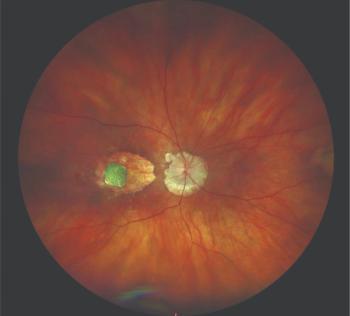
Envision Summit 2025: How to use the new G2211 code
At the Envision Summit 2025 in San Juan, Puerto Rico, Lana Rifkin, MD, gave clinicians advice on how, and when it may be most appropriate to use the new G2211 code.
At the Envision Summit 2025 in San Juan, Puerto Rico, Lana Rifkin, MD, gave clinicians advice on how, and when it may be most appropriate to use the new G2211 code.
Video Transcript:
Editor's note: The below transcript has been lightly edited for clarity.
Lana Rifkin, MD:
My name is Lana Rifkin, and I am a uveitis specialist in Boston, Massachusetts. I'm the director of the uveitis service at Ophthalmic Consultants of Boston. My session this year was, it's Friday afternoon–what uveitis walks in. I had a fabulous panel with really excellent speakers. We focused on how to evaluate and manage typical cases of uveitis that may walk into your clinic at any given moment.
My talk was actually not clinical, but on billing. My talk was the new G2211 billing code, how to use it appropriately. Because I think that in addition to the great clinical care that we provide, it's very important for us as ophthalmologists, and especially us as women, to know how to bill appropriately for the work that we do. The G2211 code is a new code that was introduced about a year ago. It's a complex code designed to encompass and reimburse for the very complex care that we provide for our patients in longitudinal format. So this applies to patients that are ongoing, that they're with us for the long haul. That we serve as the focal point of their care. Especially in uveitis, we see a lot of patients who have other complicated, systemic diseases, but we're the focal point as the eye disease drives their care. So this code recognizes the time and the mental capacity that it takes to organize all that, to communicate to the patient, with their families, with their other caregivers and other physicians. All of that takes time and effort, and this code recognizes that and reimburses a little bit for our time.
So the advice that I would have is don't be afraid of it. This code is not just designed for primary care physicians, but it is designed for those of us who do provide longitudinal care. Again, with the complexity of the disease processes and the patients that we see, it's very important to know how to bill it, when to bill it, when it's appropriate. So the main advice I have is don't be afraid. Learn the parameters. You can use it with any E&M code. It cannot be used with eye codes, but with any E&M code, even level fours and level fives. Even if you're billing a higher E&M code, it doesn't mean that you cannot bill this additional complex code.
Also extremely important is documentation. If you didn't document it, it didn't happen. But if you know that you are providing longitudinal care, that you are communicating with the patient, explaining the vision threatening nature of their disease. If you're communicating with other physicians and you document it, then it is absolutely appropriate to be billing the G2211 complex code.
Newsletter
Don’t miss out—get Ophthalmology Times updates on the latest clinical advancements and expert interviews, straight to your inbox.





